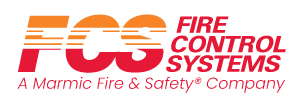Manufacturing plants have a high risk of fires or explosions. Equipment and various machinery pose a significant fire hazard if not properly maintained. Do not risk devastating effects from a manufacturing accident! Here are some common causes of fires and explosions.
Hot Work
Hot work is one of the leading causes of manufacturing fires across all industries. The sparks and molten material from hot work can reach temperatures greater than 1000°F and can travel more than 35 feet easily. It can also ignite dust from the sparks generated from the work.
Prevention
- Avoid hot work if there is an alternative.
- Train personnel on the hazards associated with hot work, the proper policies and procedures, and the use of safety equipment.
- Ensure that the area is clear of flammable or combustible materials.
- Use a written permit system for all hot work projects.
- Supervise the work.
Flammable Gasses and Liquids
Fires and explosions from flammable materials can be disastrous. Often resulting in death and injury to people.
Prevention
- Know the hazards of the chemicals on the premises from the Safety Data Sheet (SDS).
- Store flammable liquids according to OSHA-compliant procedures.
- Keep ignition sources away from flammable materials.
- Provide and use personal protective equipment.
Combustible Dust
Combustible dust is a major cause of fire in manufacturing plants. Just about everything can be combustible in dust form. A small fire can be the result from combustible material meeting an ignition source. If there is dust in the area, the initial explosion will cause the dust to become airborne. Then, the dust cloud itself can ignite, causing a secondary explosion that can be larger and more severe than the first explosion.
Prevention
- Follow a regular cleaning regimen to prevent dust build-up.
Equipment and Machinery
Faulty equipment and machinery are major causes of manufacturing fires.
Prevention
- Provide safety awareness training for everyone to learn what risks to look for and what to do if they see one.
- Keep your equipment and machinery clean.
- Follow the manufacturer’s recommended maintenance procedures for all the equipment and machinery in your plant.
Electrical Hazards
The damage caused by these fires can quickly accelerate due to several of the other items on this list.
Prevention
- Do not overload electrical equipment or circuits.
- Avoid using extension cords, and always consider them temporary.
- Unplug temporary equipment when it is not in use.
- Use antistatic equipment where required by NFPA or OSHA.
Manufacturers should take fire safety seriously to keep employees and products protected from fires. Call Fire Control Systems today to assess your fire safety needs.







